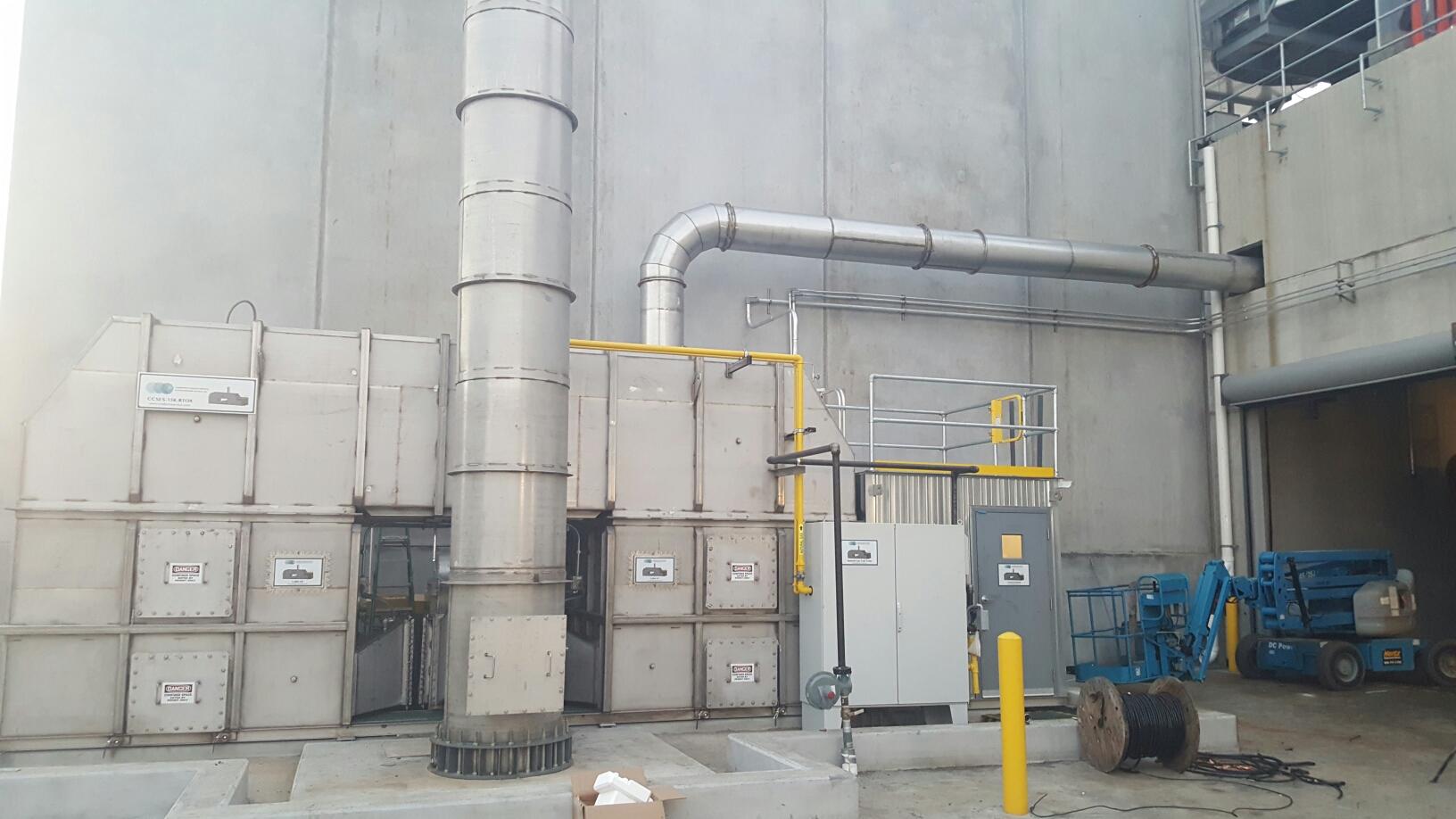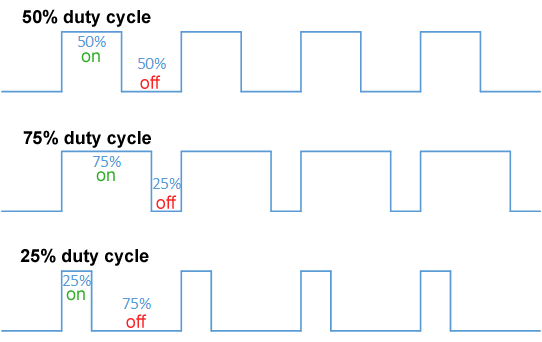|
Flyback Converter
The flyback converter is used in both AC/DC conversion, AC/DC, and DC-DC conversion, DC/DC conversion with galvanic isolation between the input and any outputs. The flyback converter is a buck-boost converter with the inductor split to form a transformer, so that the voltage ratios are multiplied with an additional advantage of isolation. Structure and principle The schematic of a flyback converter is shown in Fig. 1. It is equivalent to that of a buck–boost converter, with the inductor split to form a transformer. Therefore, the operating principle of both converters is very similar: * When the switch is closed (top of Fig. 2), the primary of the transformer is directly connected to the input voltage source. The primary current and magnetic flux in the transformer increases, storing energy in the transformer. The voltage induced in the secondary winding is negative, so the diode is reverse-biased (i.e., blocked). The output capacitor supplies energy to the output load. * Wh ... [...More Info...] [...Related Items...] OR: [Wikipedia] [Google] [Baidu] |
Flyback Conventions
The term flyback may refer to: *Flyback chronograph, a single-push-button clock for stopping, resetting and restarting time measurement *Flyback converter, a type of DC to DC converter *Flyback diode, also known as a “freewheel diode”, a used to protect against spikes from inductive loads *Flyback transformer, used to drive cathode ray tubes *FlyBack, an open source backup utility {{disambig ... [...More Info...] [...Related Items...] OR: [Wikipedia] [Google] [Baidu] |
Capacitor
In electrical engineering, a capacitor is a device that stores electrical energy by accumulating electric charges on two closely spaced surfaces that are insulated from each other. The capacitor was originally known as the condenser, a term still encountered in a few compound names, such as the '' condenser microphone''. It is a passive electronic component with two terminals. The utility of a capacitor depends on its capacitance. While some capacitance exists between any two electrical conductors in proximity in a circuit, a capacitor is a component designed specifically to add capacitance to some part of the circuit. The physical form and construction of practical capacitors vary widely and many types of capacitor are in common use. Most capacitors contain at least two electrical conductors, often in the form of metallic plates or surfaces separated by a dielectric medium. A conductor may be a foil, thin film, sintered bead of metal, or an electrolyte. The nonconductin ... [...More Info...] [...Related Items...] OR: [Wikipedia] [Google] [Baidu] |
Forward Converter
The forward converter is a DC/DC converter that uses a transformer to increase or decrease the output voltage (depending on the transformer ratio) and provide galvanic isolation for the load. With multiple output windings, it is possible to provide both higher and lower voltage outputs simultaneously. While it looks superficially like a flyback converter, it operates in a fundamentally different way, and is generally more energy efficient. A flyback converter stores energy in the magnetic field in the transformer air gap during the time the converter switching element (transistor) is conducting. When the switch turns off, the stored magnetic field collapses and the energy is transferred to the output of the flyback converter as electric current. The flyback converter can be viewed as two inductors sharing a common core with opposite polarity windings. In contrast, the forward converter (which is based on a transformer with same-polarity windings, higher magnetizing inductance, a ... [...More Info...] [...Related Items...] OR: [Wikipedia] [Google] [Baidu] |
Xenon Flash Lamp
A flashtube (flashlamp) produces an electrostatic discharge with an extremely intense, incoherent, full-spectrum white light for a very short time. A flashtube is a glass tube with an electrode at each end and is filled with a gas that, when triggered, ionizes and conducts a high-voltage pulse to make light. Flashtubes are used most in photography; they also are used in science, medicine, industry, and entertainment. Construction The lamp consists of a hermetically sealed glass tube which is filled with a noble gas, usually xenon, and electrodes to carry electric current to the gas. Additionally, a high voltage power source is necessary to energize the gas as a trigger event. A charged photoflash capacitor is usually used to supply energy for the flash, so as to allow very speedy delivery of very high electrical current when the lamp is triggered. Glass envelopes The glass envelope is most commonly a thin tube, often made of fused quartz, borosilicate or Pyrex, which may be ... [...More Info...] [...Related Items...] OR: [Wikipedia] [Google] [Baidu] |
Cathode Ray Tube
A cathode-ray tube (CRT) is a vacuum tube containing one or more electron guns, which emit electron beams that are manipulated to display images on a phosphorescent screen. The images may represent electrical waveforms on an oscilloscope, a Film frame, frame of video on an Analog television, analog television set (TV), Digital imaging, digital raster graphics on a computer monitor, or other phenomena like radar targets. A CRT in a TV is commonly called a picture tube. CRTs have also been Williams tube, used as memory devices, in which case the screen is not intended to be visible to an observer. The term ''cathode ray'' was used to describe electron beams when they were first discovered, before it was understood that what was emitted from the cathode was a beam of electrons. In CRT TVs and computer monitors, the entire front area of the tube is scanned repeatedly and systematically in a fixed pattern called a raster scan, raster. In color devices, an image is produced by con ... [...More Info...] [...Related Items...] OR: [Wikipedia] [Google] [Baidu] |
Waste Heat
Waste heat is heat that is produced by a machine, or other process that uses energy, as a byproduct of doing work. All such processes give off some waste heat as a fundamental result of the laws of thermodynamics. Waste heat has lower utility (or in thermodynamics lexicon a lower exergy or higher entropy) than the original energy source. Sources of waste heat include all manner of human activities, natural systems, and all organisms, for example, incandescent light bulbs get hot, a refrigerator warms the room air, a building gets hot during peak hours, an internal combustion engine generates high-temperature exhaust gases, and electronic components get warm when in operation. Instead of being "wasted" by release into the ambient environment, sometimes waste heat (or cold) can be used by another process (such as using hot engine coolant to heat a vehicle), or a portion of heat that would otherwise be wasted can be reused in the same process if make-up heat is added to the sys ... [...More Info...] [...Related Items...] OR: [Wikipedia] [Google] [Baidu] |
Duty Cycle
A duty cycle or power cycle is the fraction of one period in which a signal or system is active. Duty cycle is commonly expressed as a percentage or a ratio. A period is the time it takes for a signal to complete an on-and-off cycle. As a formula, a duty cycle (%) may be expressed as: :D = \frac \times 100\% Equally, a duty cycle (ratio) may be expressed as: :D = \frac where D is the duty cycle, PW is the pulse width (pulse active time), and T is the total period of the signal. Thus, a 60% duty cycle means the signal is on 60% of the time and off 40% of the time. The "on time" for a 60% duty cycle could be a fraction of a second, a day, or even a week, depending on the length of the period. Duty cycles can be used to describe the percent time of an active signal in an electrical device such as the power switch in a switching power supply or the firing of action potentials by a living system such as a neuron. Some publications use \alpha as the symbol for duty cycle. As a ... [...More Info...] [...Related Items...] OR: [Wikipedia] [Google] [Baidu] |
Battery Charger
A battery charger, recharger, or simply charger, is a device that stores energy in an electric battery by running current through it. The charging protocol—how much voltage and current, for how long and what to do when charging is complete—depends on the size and type of the battery being charged. Some battery types have high tolerance for overcharging after the battery has been fully charged and can be recharged by connection to a constant voltage source or a constant current source, depending on battery type. Simple chargers of this type must be manually disconnected at the end of the charge cycle. Other battery types use a timer to cut off when charging should be complete. Other battery types cannot withstand over-charging, becoming damaged (reduced capacity, reduced lifetime), over heating or even exploding. The charger may have temperature or voltage sensing circuits and a microprocessor controller to safely adjust the charging current and voltage, determine the stat ... [...More Info...] [...Related Items...] OR: [Wikipedia] [Google] [Baidu] |
Optocoupler
An opto-isolator (also called an optocoupler, photocoupler, or optical isolator) is an electronic component that transfers electrical Signal, signals between two isolated circuits by using light. Opto-isolators prevent high voltages from affecting the system receiving the signal.Lee et al., p. 2. Commercially available opto-isolators withstand input-to-output voltages up to 10 Volt, kVHasse, p. 145. and voltage transients with speeds up to 25 kV/microsecond, μs.Joffe and Kai-Sang Lock, p. 279. A common type of opto-isolator consists of an Light emitting diode, LED and a phototransistor in the same opaque package. Other types of source-sensor combinations include LED-photodiode, LED-thyristor#Photothyristors, LASCR, and lamp (electrical component), lamp-photoresistor pairs. Usually opto-isolators transfer digital (on-off) signals and can act as an electronic switch, but some techniques allow them to be used with analog signals. History The value of optically coupling a ... [...More Info...] [...Related Items...] OR: [Wikipedia] [Google] [Baidu] |
Pulse-width Modulation
Pulse-width modulation (PWM), also known as pulse-duration modulation (PDM) or pulse-length modulation (PLM), is any method of representing a signal as a rectangular wave with a varying duty cycle (and for some methods also a varying period). PWM is useful for controlling the average power or amplitude delivered by an electrical signal. The average value of voltage (and current) fed to the load is controlled by switching the supply between 0 and 100% at a rate faster than it takes the load to change significantly. The longer the switch is on, the higher the total power supplied to the load. Along with maximum power point tracking (MPPT), it is one of the primary methods of controlling the output of solar panels to that which can be utilized by a battery. PWM is particularly suited for running inertial loads such as motors, which are not as easily affected by this discrete switching. The goal of PWM is to control a load; however, the PWM switching frequency must be sele ... [...More Info...] [...Related Items...] OR: [Wikipedia] [Google] [Baidu] |






